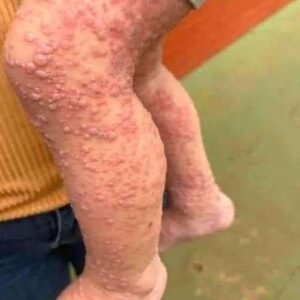Maintaining healthy nails goes beyond just aesthetics; it serves as an important indicator of overall well-being. The condition of your nails can reveal a great deal about your health, making it essential to adopt proper nail care practices. Healthy nails are typically smooth, strong, and uniform in color, with no ridges, discoloration, or spots.
However, various factors such as nutritional deficiencies, environmental exposure, and underlying health conditions can negatively impact nail health.
Understanding the factors that affect nails is the first step in ensuring they remain in good condition. Several common nail issues can arise due to poor care habits, external stressors, or medical conditions. Brittle or weak nails, for example, are often caused by repeated exposure to water, harsh cleaning products, or nutrient deficiencies, particularly a lack of biotin.
Frequent application of nail polish and removers containing harsh chemicals can also contribute to weak nails, making them prone to splitting and breaking.
Discoloration is another common concern. Nails can turn yellow due to excessive use of nail polish, smoking, or fungal infections. Dark streaks on the nails, however, could signal a more serious issue and should be examined by a healthcare professional.
Ridges in the nails may also appear, with vertical ridges often considered a natural part of aging, whereas horizontal ridges could indicate a previous injury, illness, or more serious health condition. Additionally, many people notice white spots on their nails, which are usually harmless and caused by minor trauma to the nail plate, such as hitting or pinching a nail.
To maintain strong and healthy nails, it is essential to follow a consistent care routine. Keeping nails clean and dry prevents bacterial and fungal infections. When moisture becomes trapped under the nails, it creates an ideal environment for infections to thrive. After washing hands, it’s crucial to dry them thoroughly, paying close attention to the spaces between fingers and around the nails.
Regular trimming and shaping of nails also help prevent breakage and snags. Nails should be cut straight across with slightly rounded edges to avoid splitting or ingrown nails. In addition to trimming, moisturizing nails and cuticles is essential to prevent them from becoming dry and brittle. Applying a nourishing hand cream or cuticle oil helps maintain hydration and strength.
Another vital practice is wearing protective gloves when performing household chores or handling harsh chemicals. Exposure to detergents and solvents can weaken nails over time, leading to peeling and splitting.
Using gloves helps create a barrier against damaging substances, preserving nail health.
Choosing the right nail care products is also crucial. Many nail polishes and removers contain formaldehyde and acetone, which can strip the nails of their natural oils, making them brittle. Opting for acetone-free removers and polishes with nourishing ingredients can prevent long-term damage.
Biting nails is a habit that many people struggle to break, but it can lead to various problems, including infections and weakened nail beds. Bacteria and dirt accumulate under the nails, and biting them transfers these germs to the mouth, increasing the risk of illness. Keeping nails neatly trimmed and applying a bitter-tasting nail treatment can help deter nail-biting.
Diet plays a significant role in nail health. A well-balanced diet rich in essential vitamins and minerals supports strong, healthy nails. Biotin, found in foods like eggs, nuts, and legumes, is particularly beneficial for nail strength.
Omega-3 fatty acids, present in salmon and flaxseeds, help keep nails hydrated and prevent brittleness. Iron, zinc, and protein also contribute to overall nail health, making it important to maintain a nutrient-rich diet.

While most nail issues can be resolved with proper care and lifestyle changes, certain symptoms may indicate an underlying health problem that requires medical attention. If nails suddenly change color, develop dark streaks, or appear thickened or curled, it may be a sign of a more serious condition.
Clubbing, where nails curve downward around the fingertips, can be associated with respiratory or cardiovascular issues. Similarly, ridges or indentations that appear suddenly might suggest a recent illness or nutrient deficiency.
Signs of infection, such as swelling, redness, bleeding, or pus around the nail, should never be ignored. Bacterial or fungal infections can worsen over time and may require prescription medications to resolve. Persistent pain, changes in nail shape, or unexplained brittleness should also be evaluated by a healthcare provider to rule out potential health concerns.
Healthy nails reflect good hygiene, proper nutrition, and overall well-being. By understanding common nail problems and implementing effective care strategies, it’s possible to maintain strong and attractive nails. While regular grooming and protective habits can prevent many issues, it’s important to stay attentive to any significant changes and seek medical advice when necessary.
Developing a nail care routine that includes proper hygiene, hydration, and a nutritious diet can make a noticeable difference in the strength and appearance of nails. Simple adjustments, such as avoiding harsh chemicals, keeping nails moisturized, and trimming them regularly, go a long way in preserving their health. With consistent care and awareness, anyone can achieve healthier, more resilient nails that not only look good but also contribute to overall wellness.





